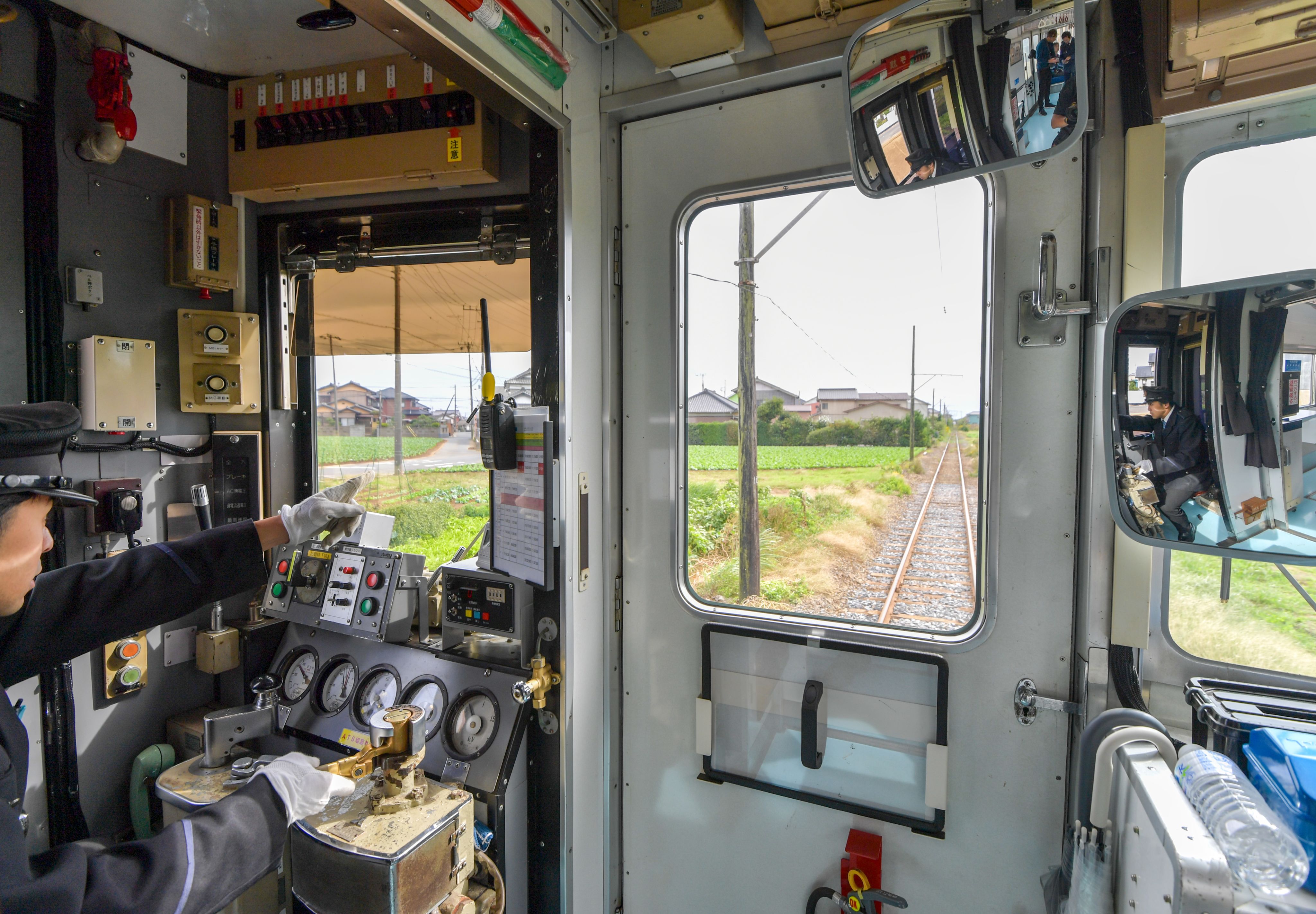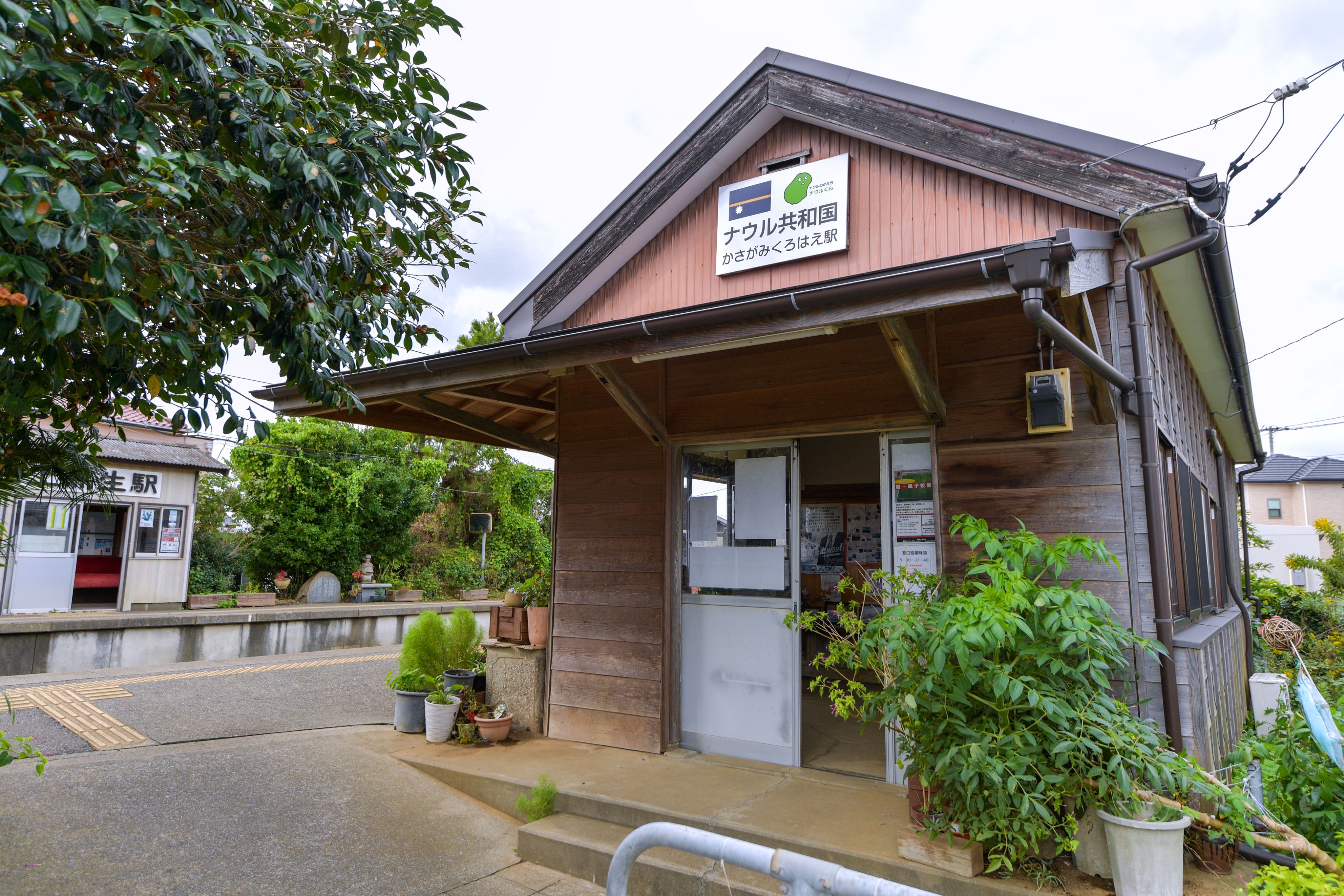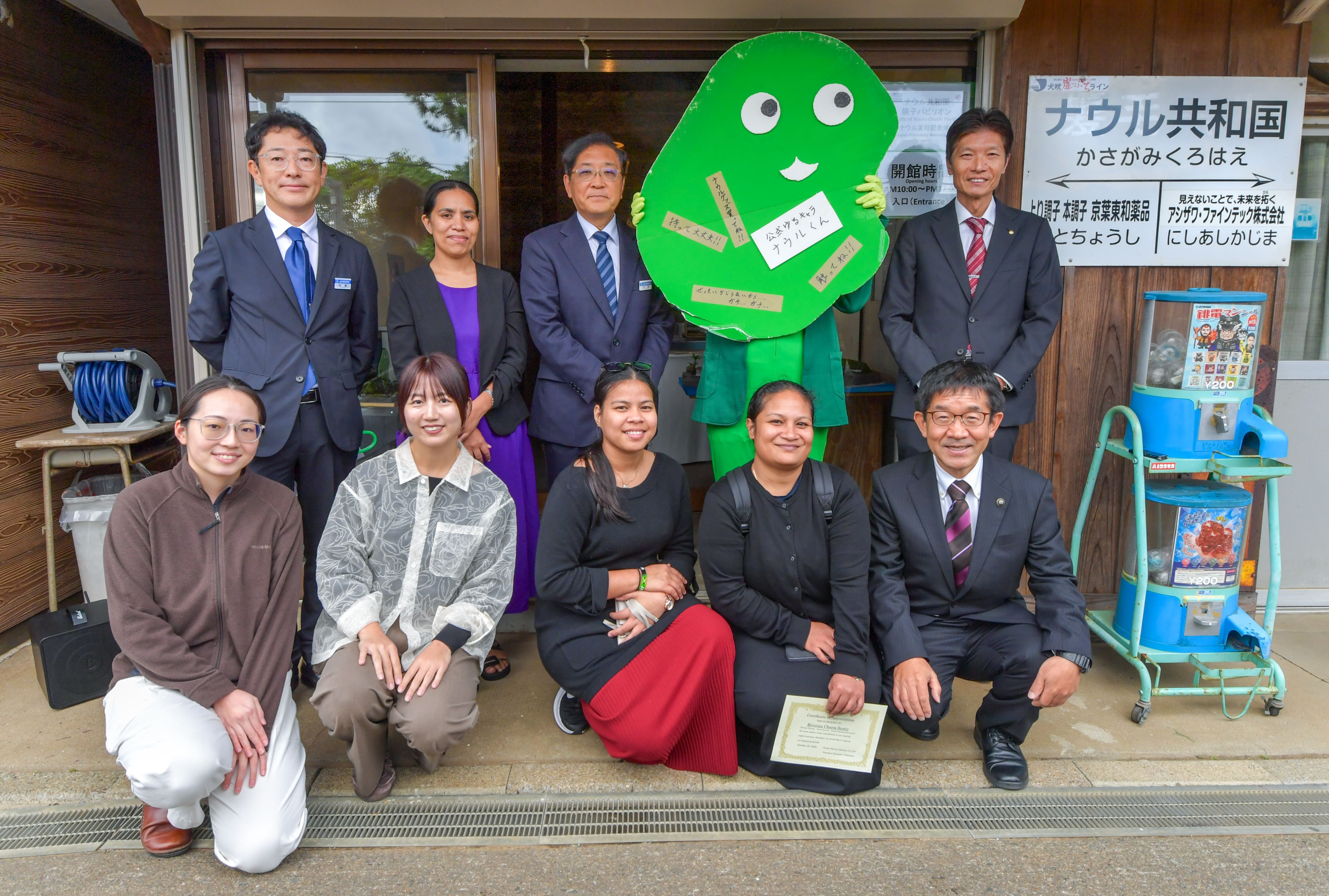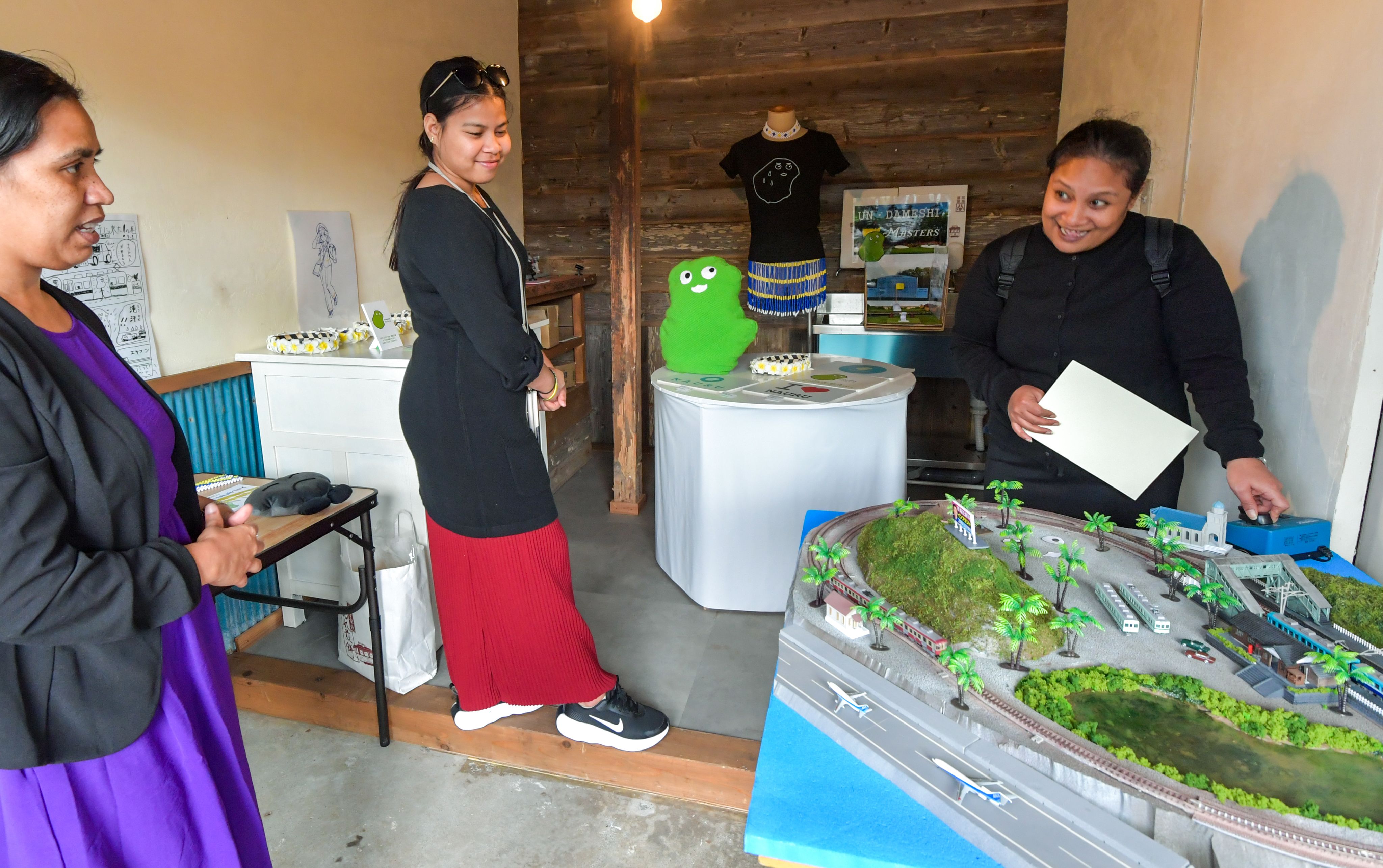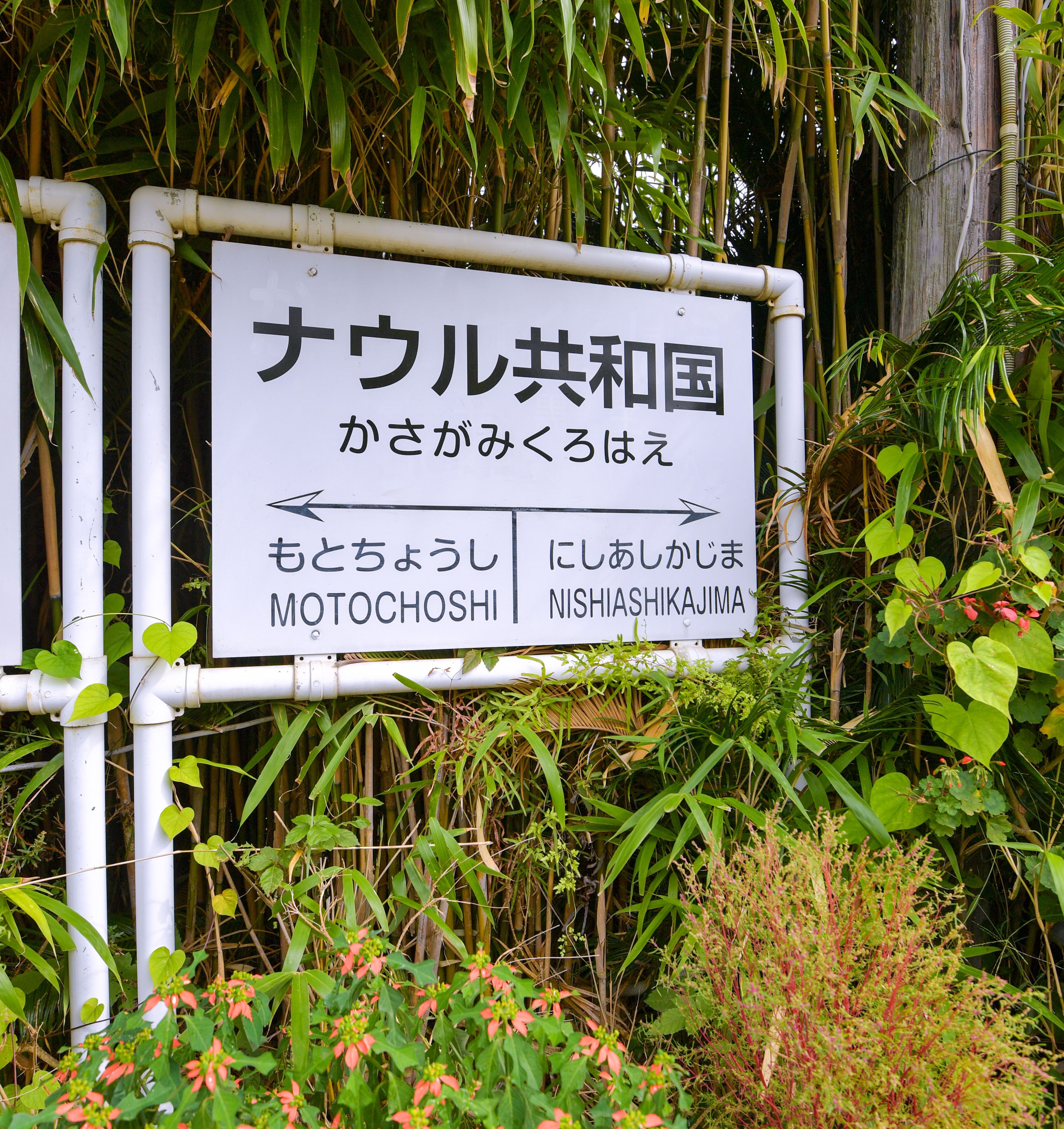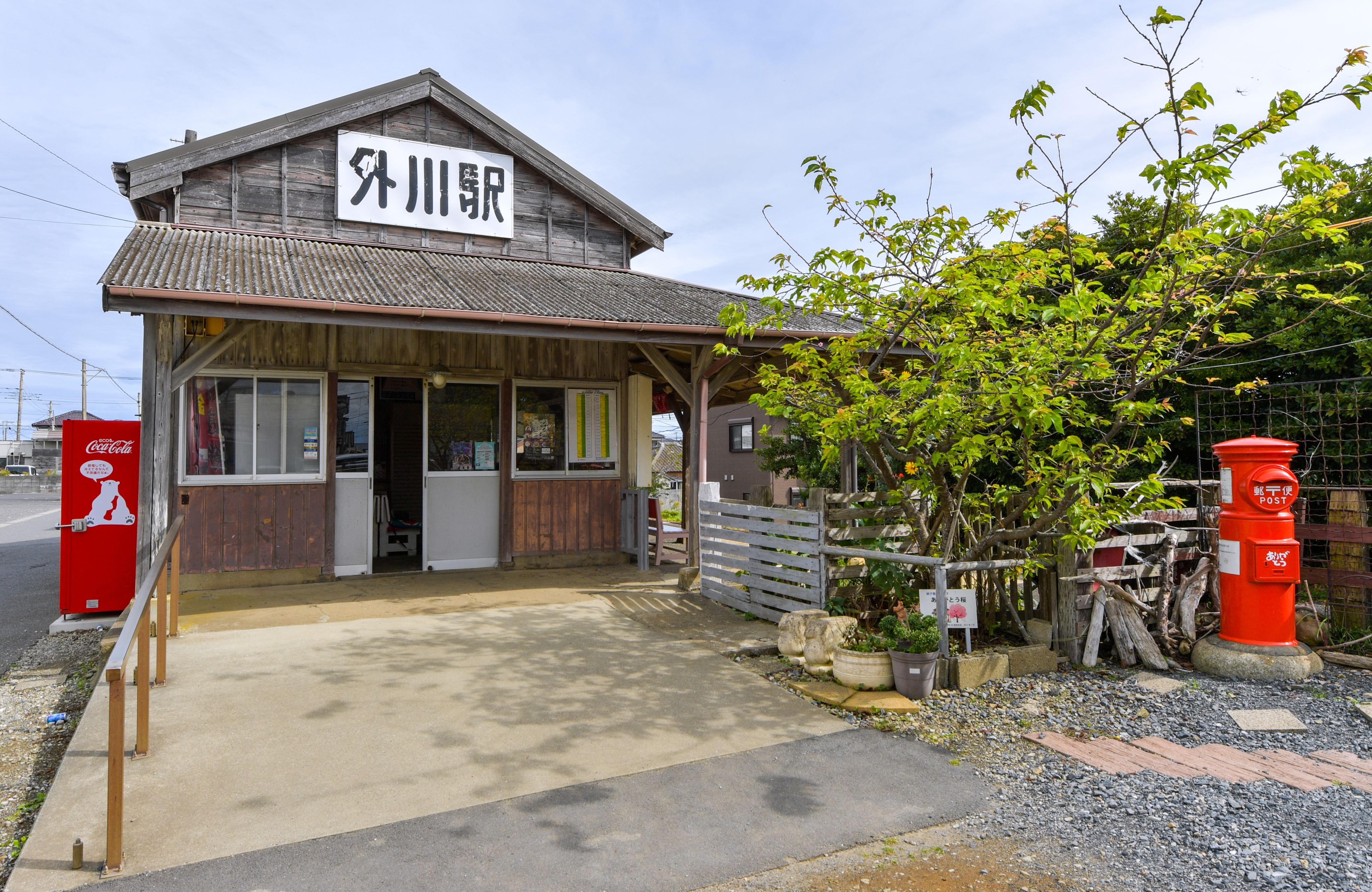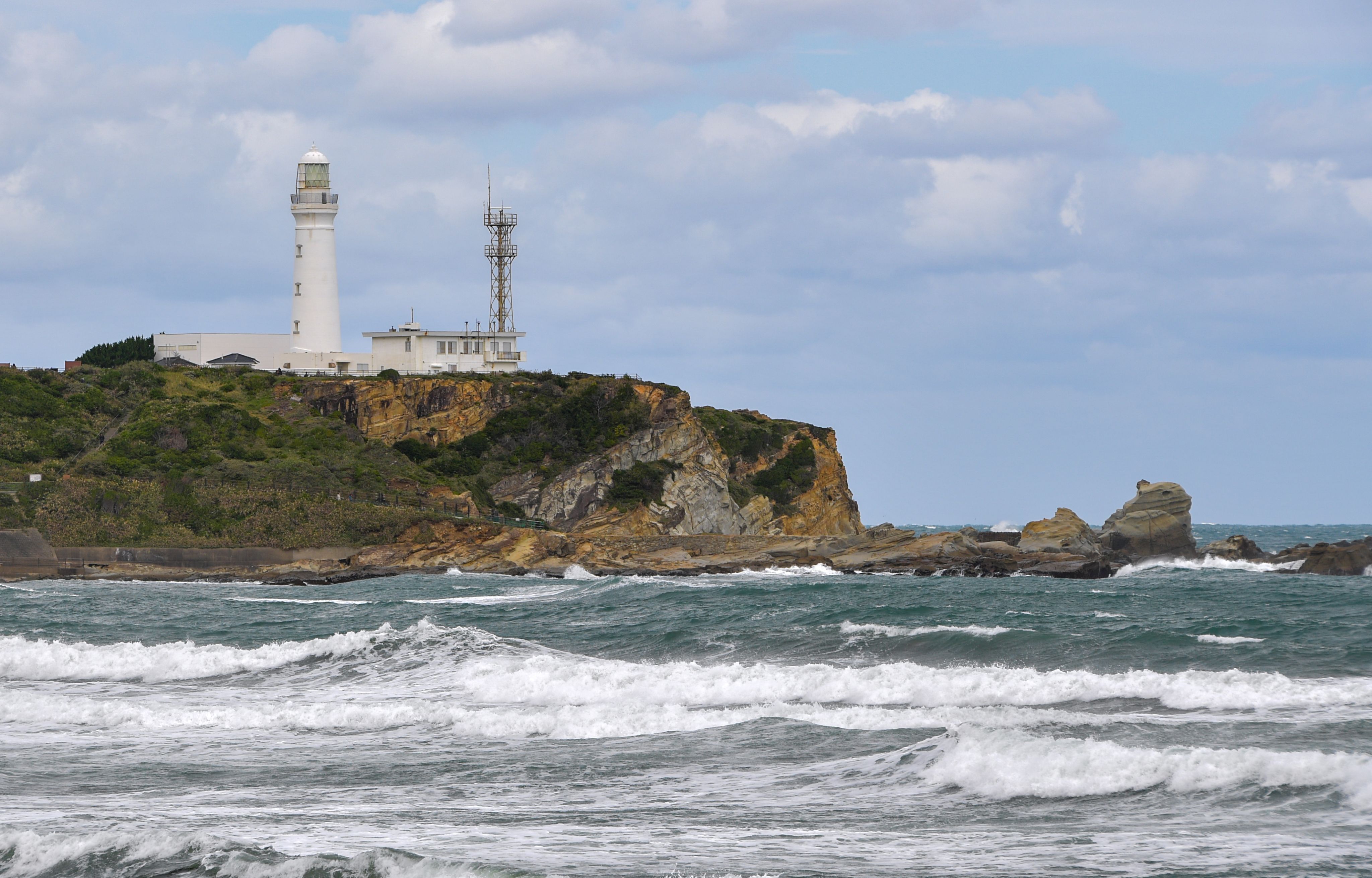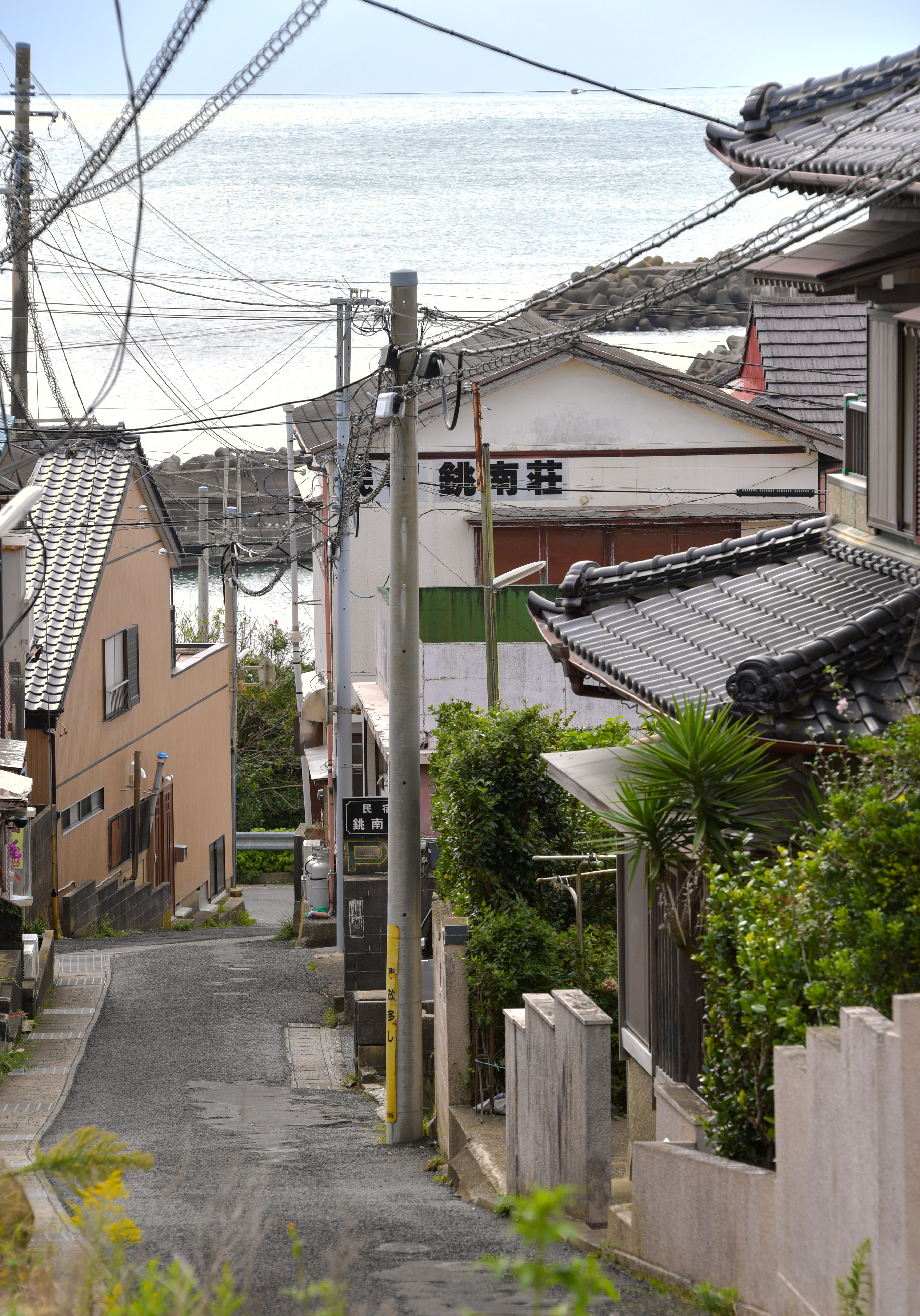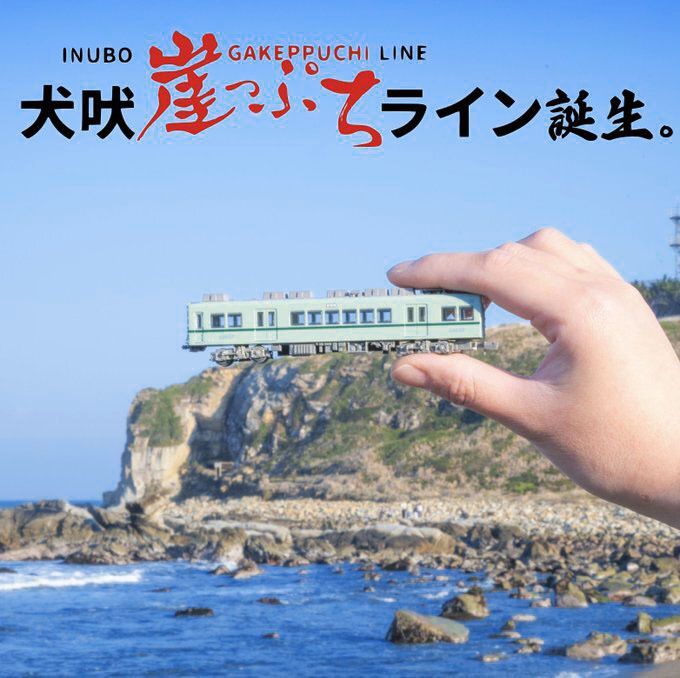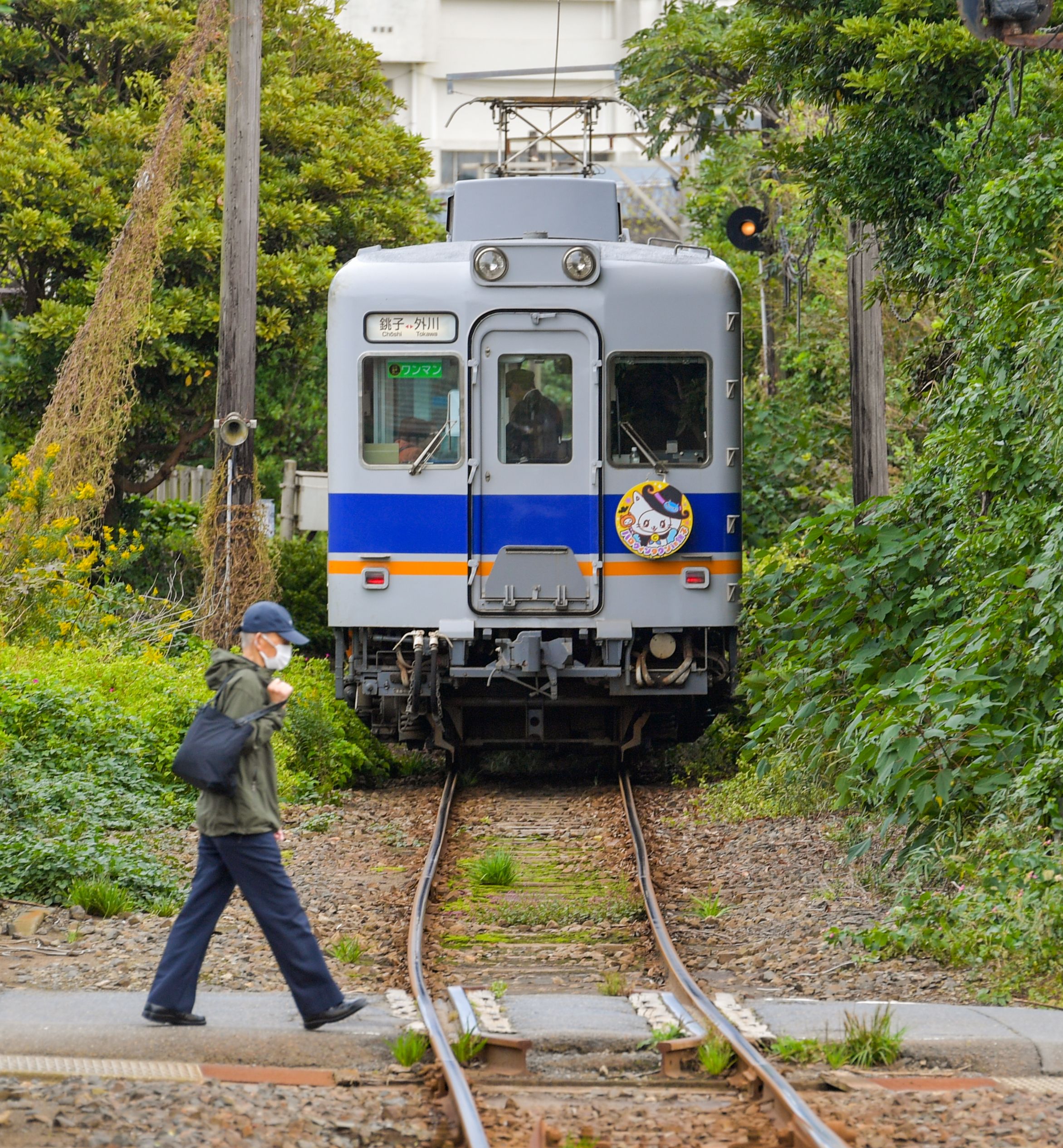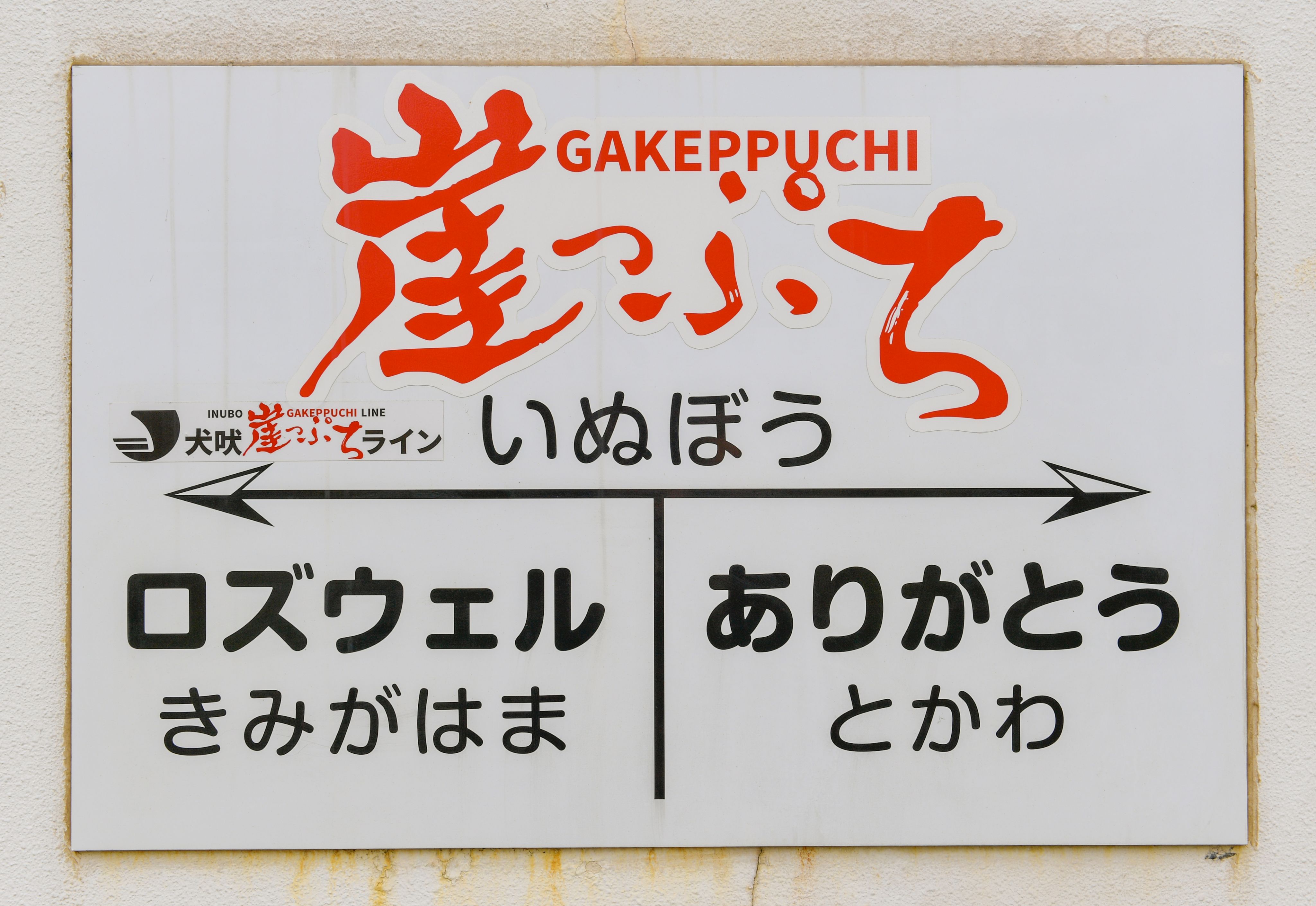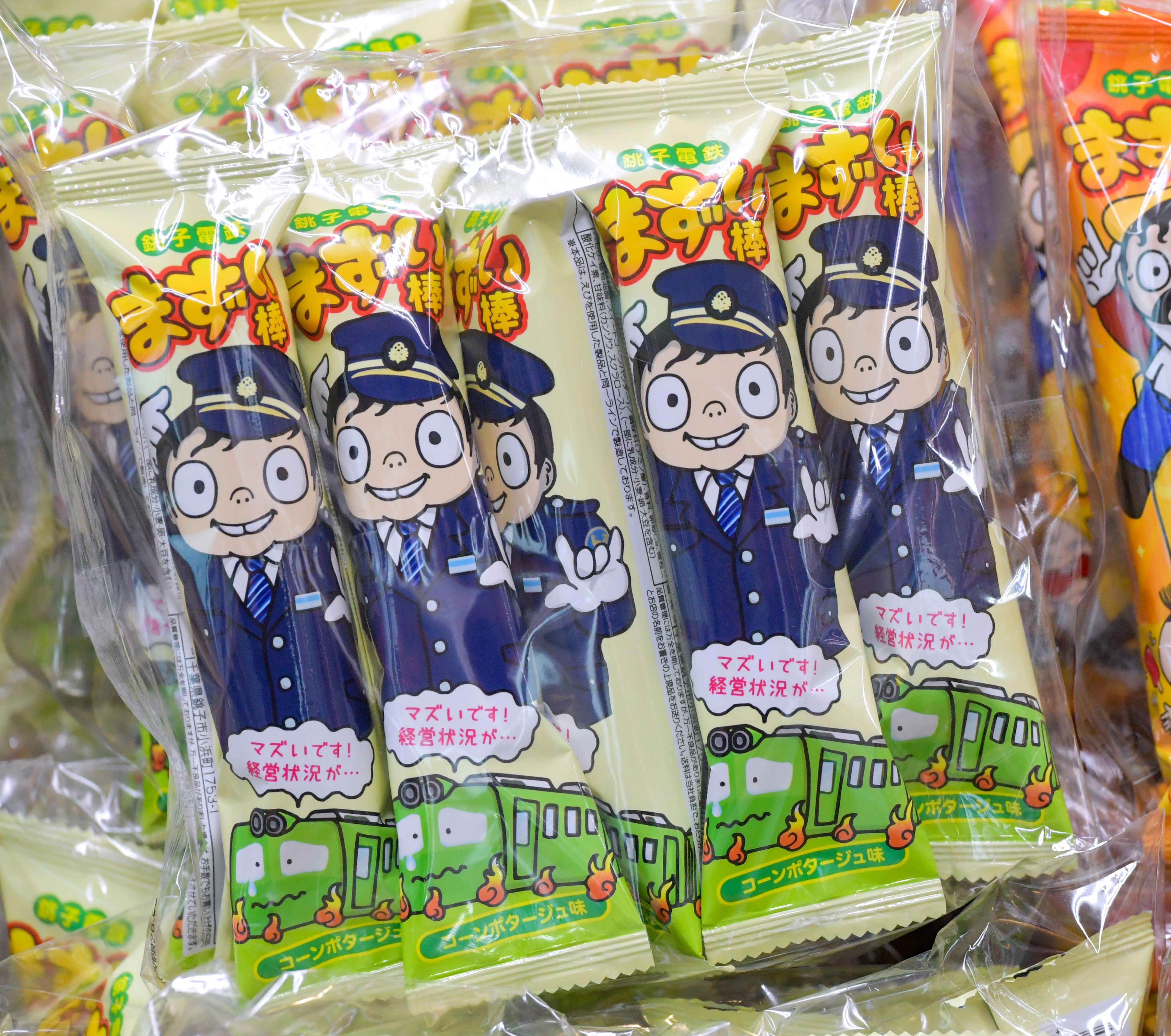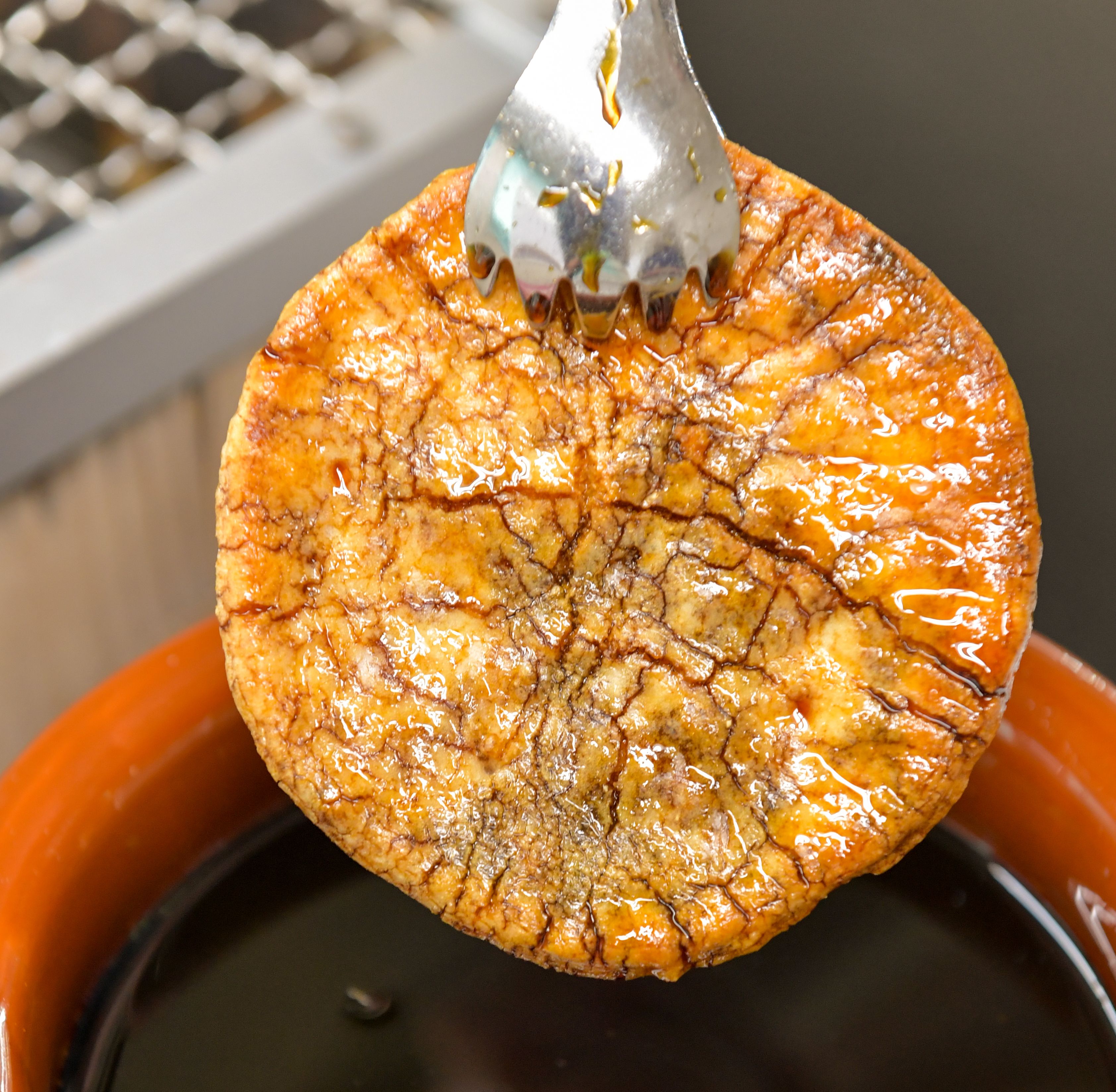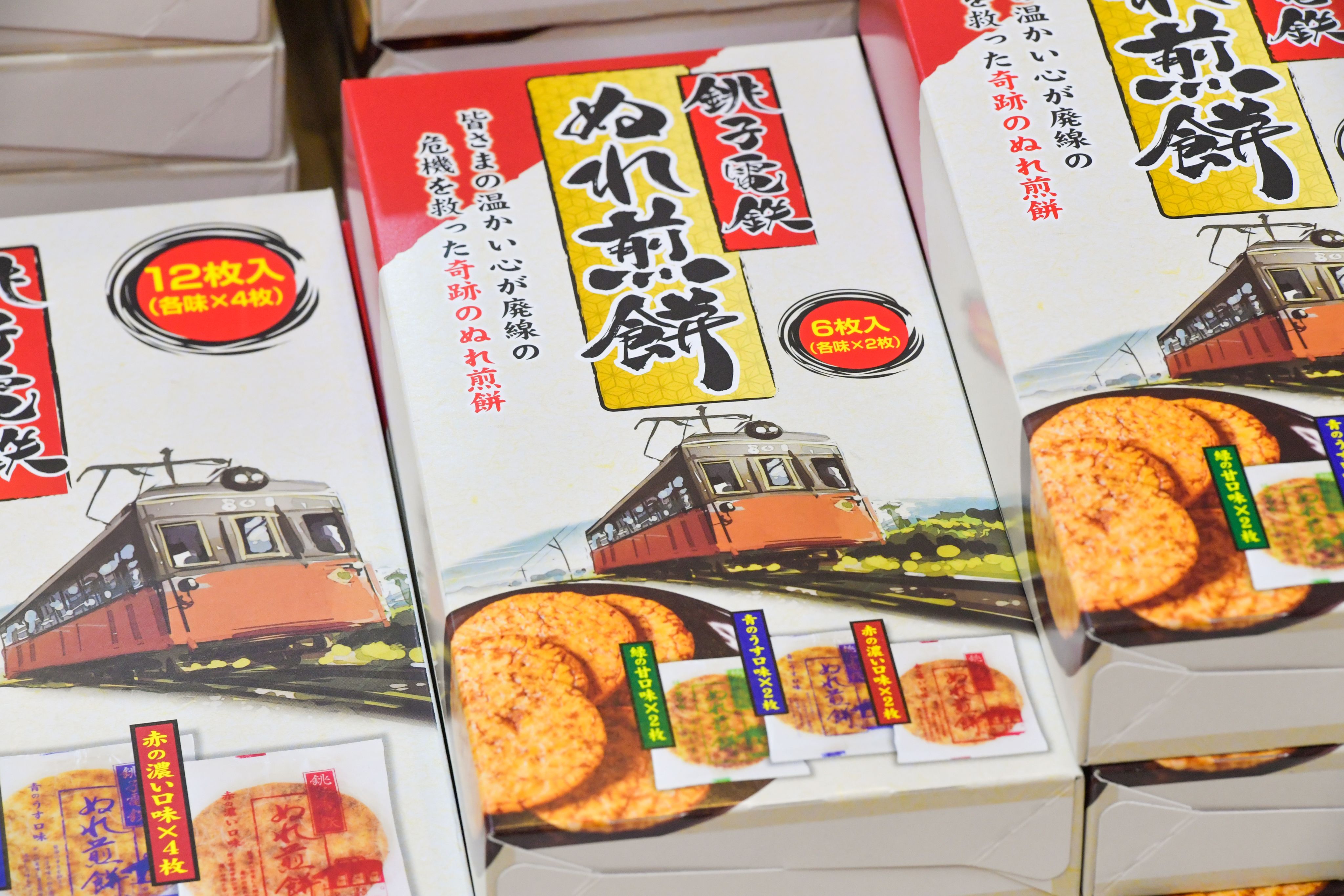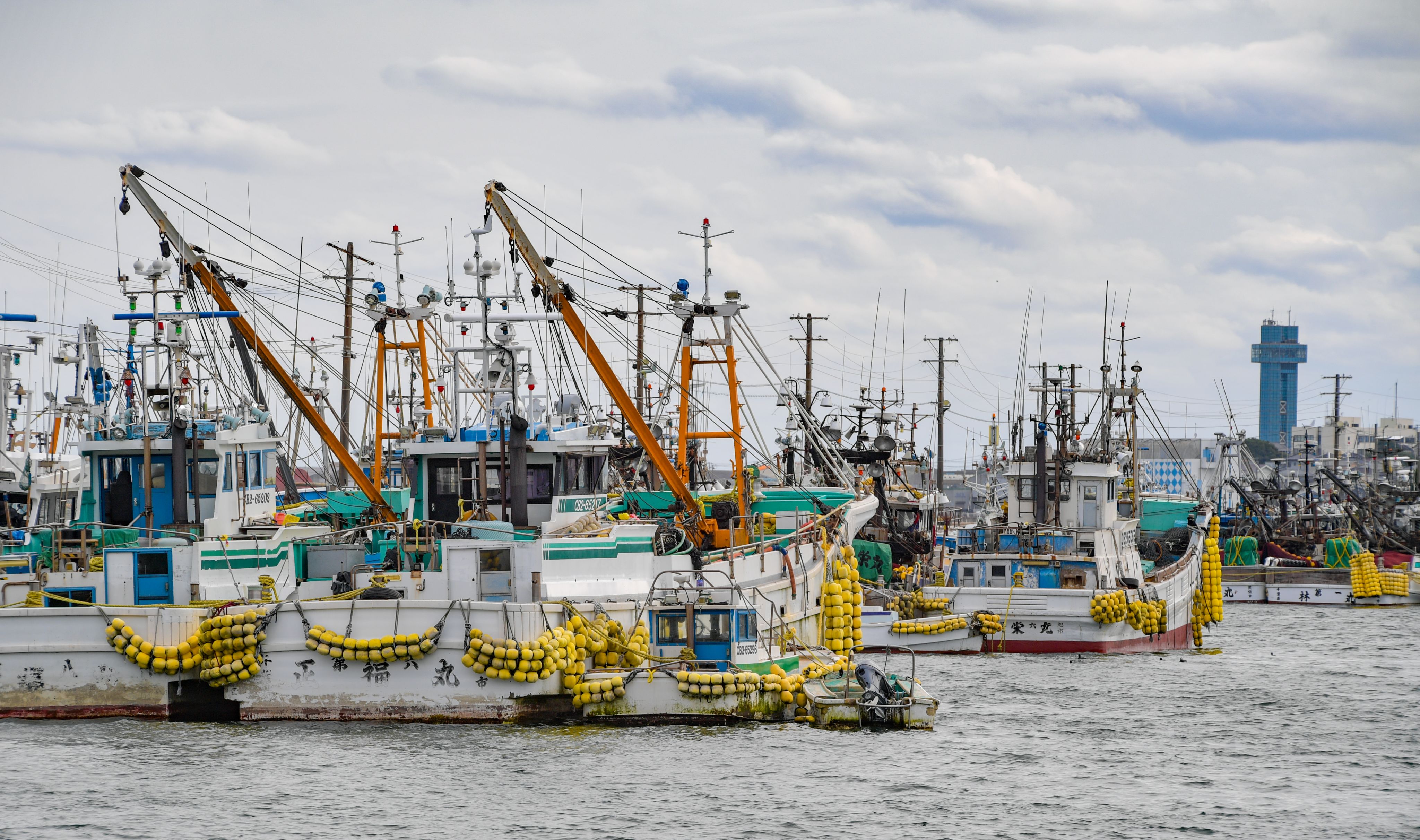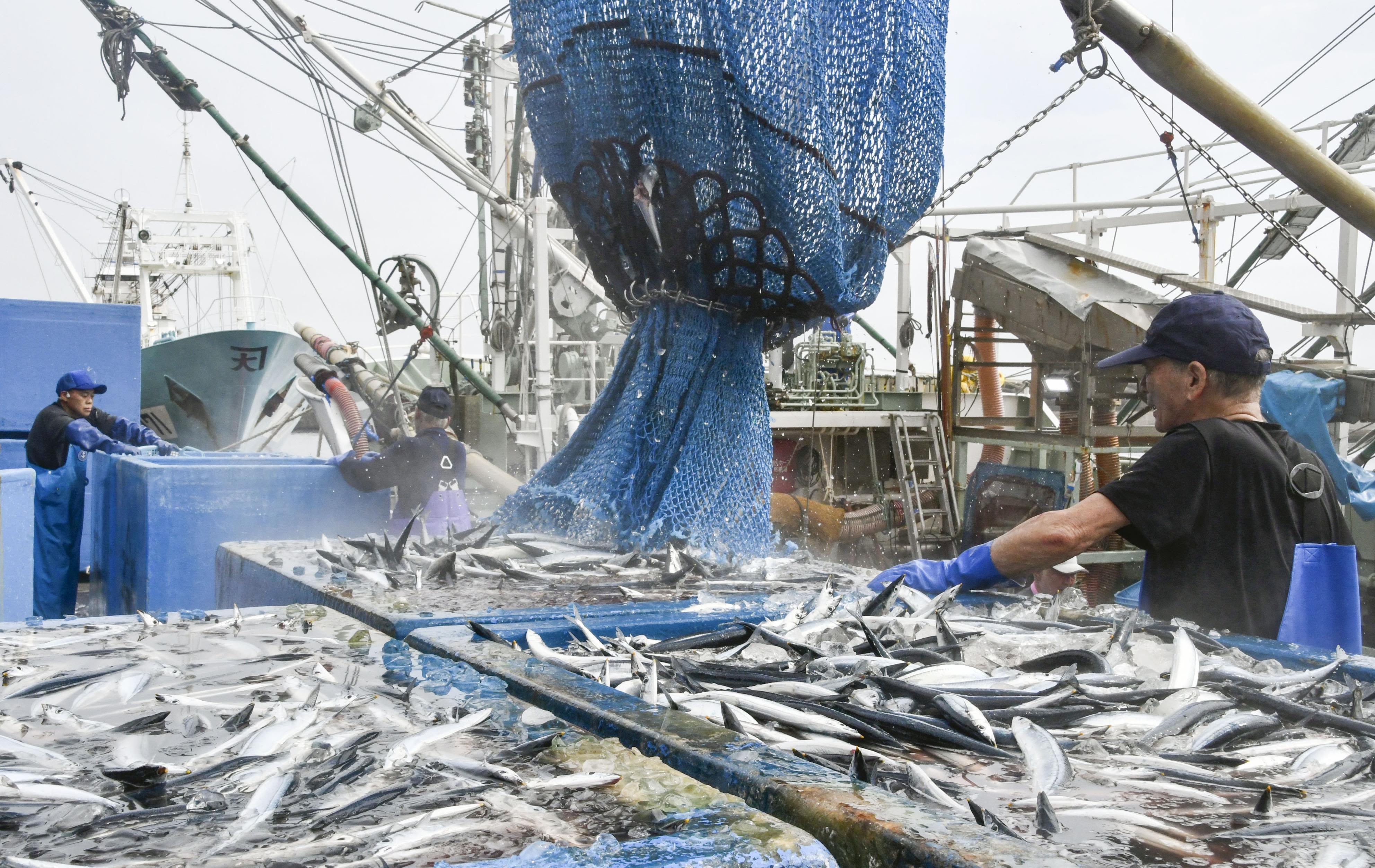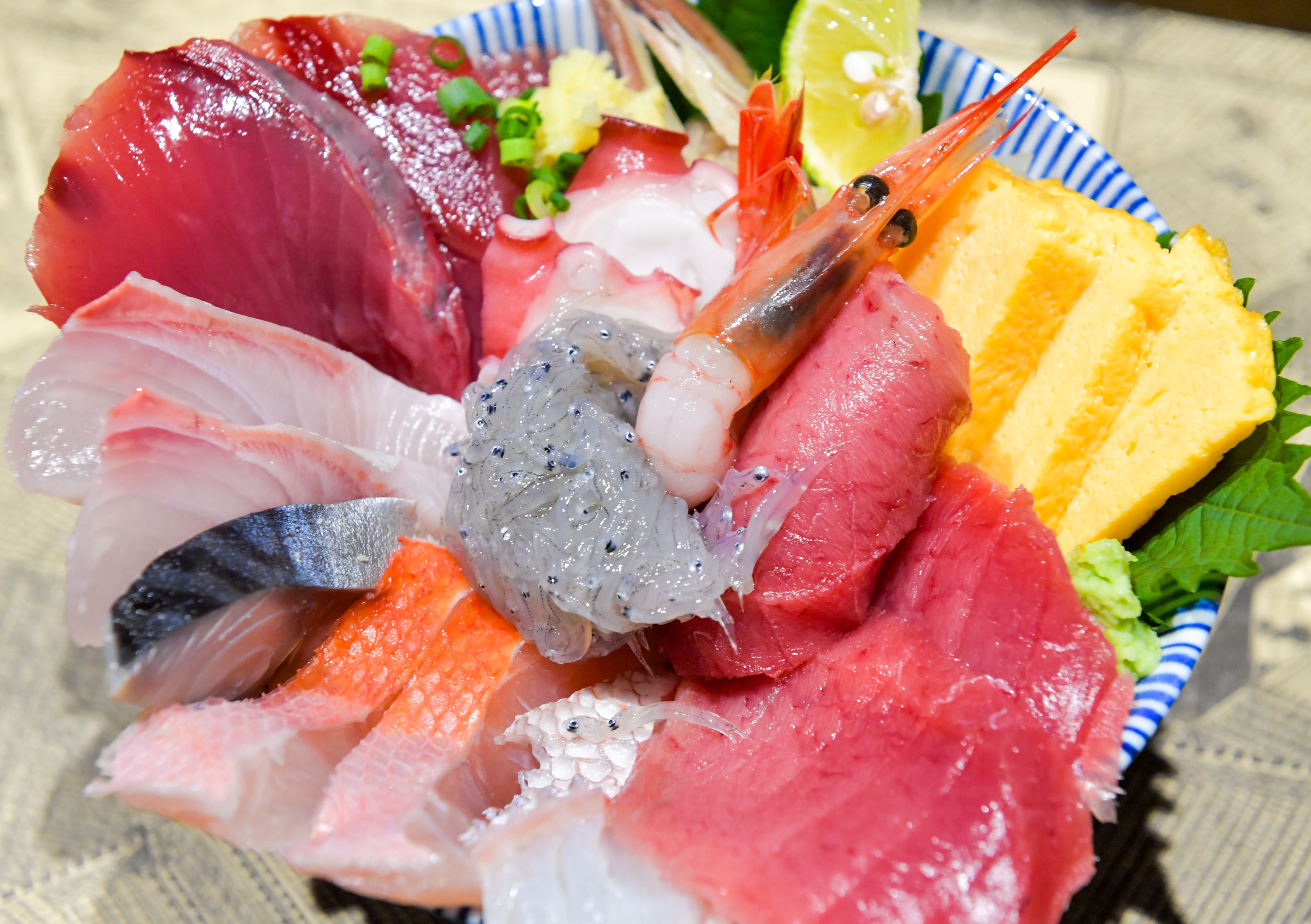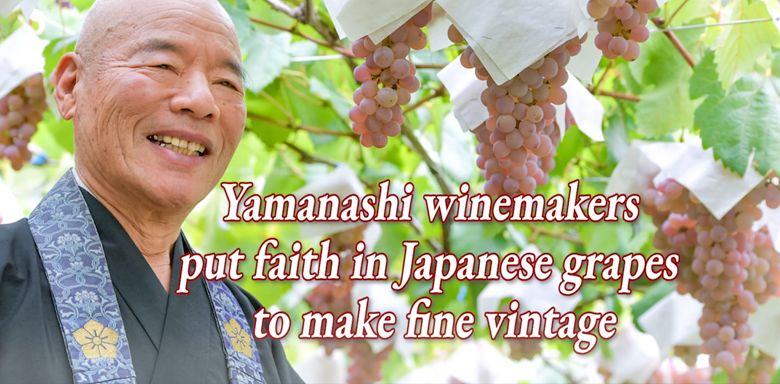Life on the edge
no joke for struggling Choshi railway
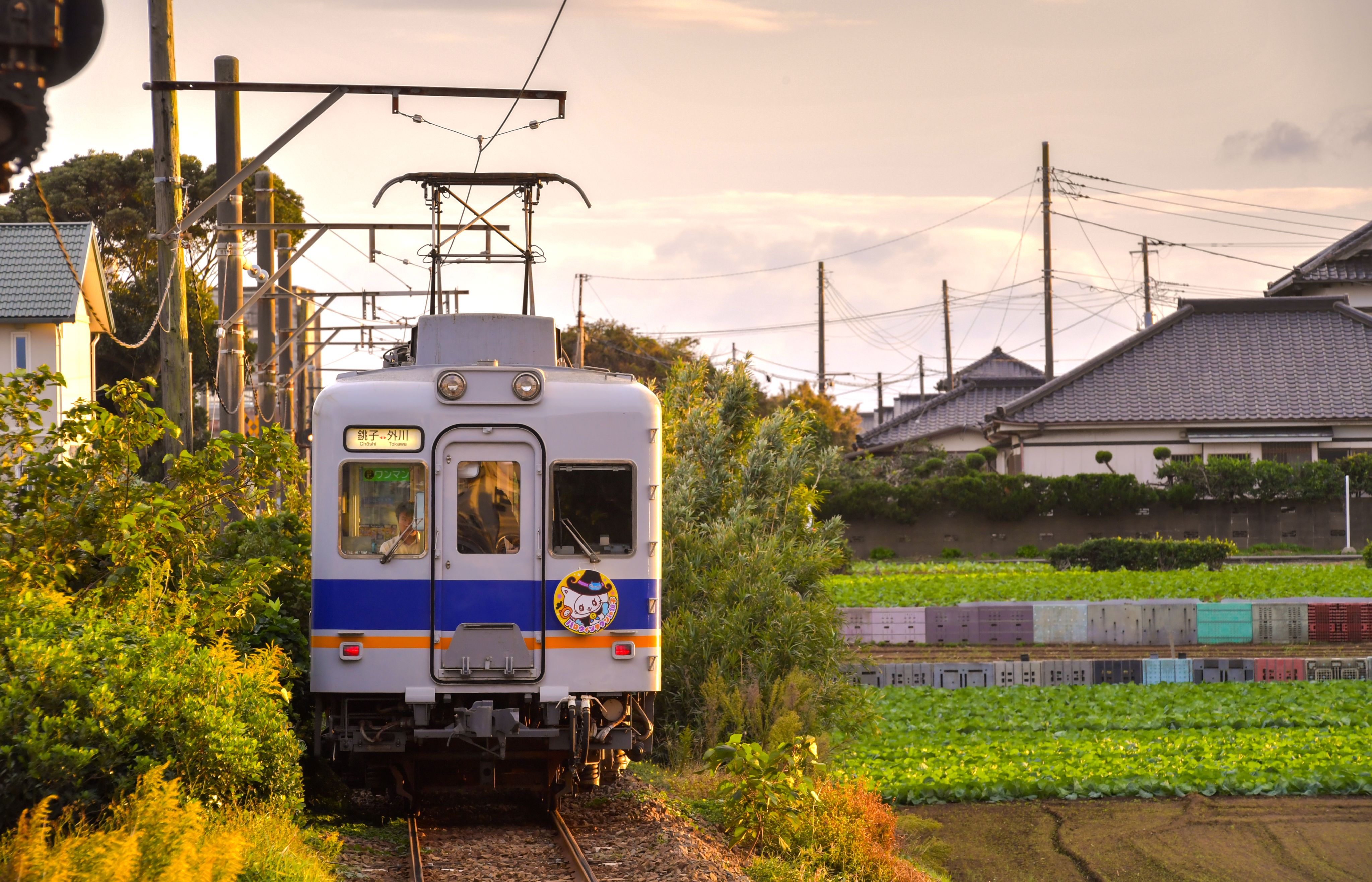
TThe unconventional approach of a struggling railway operator in Choshi, near Tokyo, to revive its fortunes is just about keeping the service on track.
Kasagami-Kurohae Station in Choshi, Chiba Prefecture, is an unlikely venue for the development of international relations. The tiny train station on the local Choshi Electric Railway Line is largely hidden in a rural landscape dominated by cabbage fields.
On October 23, however, railway operator Choshi Electric Railway Co. and the Republic of Nauru, an island nation in the South Pacific, celebrated an unlikely friendship with the opening of the Republic of Nauru Choshi Pavilion at the station.
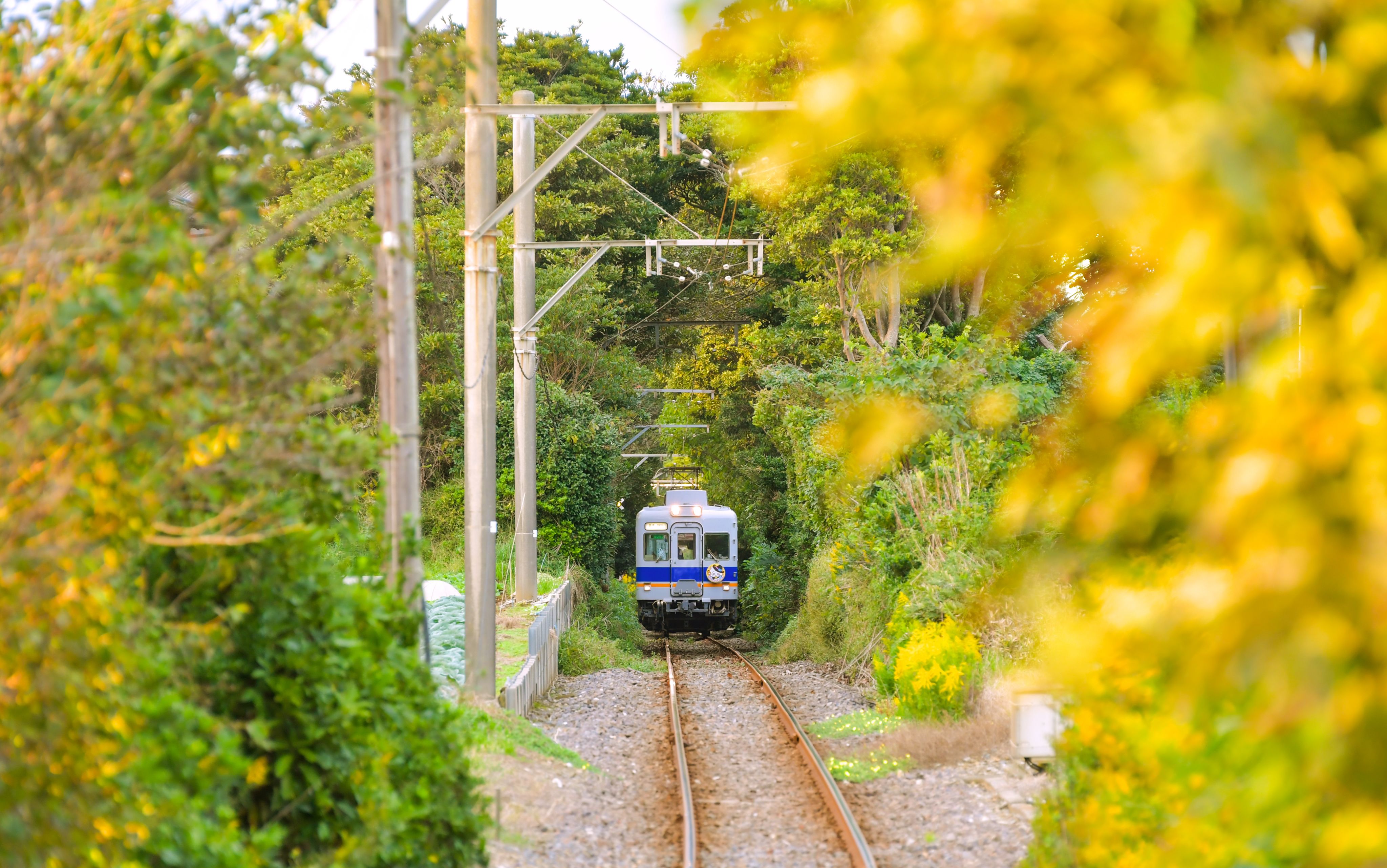
The small museum includes displays of traditional clothing and other items from the Republic of Nauru pavilion at the recently closed World Exposition in Osaka.
Shandi Akken, from the Republic of Nauru’s national heritage department, traveled to Choshi for the ceremony after serving at the expo pavilion. The country’s island-shaped expo mascot, Nauru-kun, was also present.
“I hope that this station and museum will become a new hub for friendship between Japan and Nauru,” Akken said. She added that Nauru is working to establish cultural exchanges with cities in Japan and hopes to officially collaborate with Choshi in the future.
The connection between the struggling railway and the world’s smallest island nation by area was made on social media.
A chance exchange on the platform X between Choshi Electric Railway and the Japanese account of Nauru’s tourism bureau led to the country acquiring naming rights to Kasagami-Kurohae Station in August.
Sign for the renamed Republic of Nauru Kasagami-Kurohae Station.
Sign for the renamed Republic of Nauru Kasagami-Kurohae Station.
The station is now the Republic of Nauru Kasagami-Kurohae Station. It is the first station on the line to be named after a country since Choshi Electric Railway began selling the naming rights to generate much-needed income.
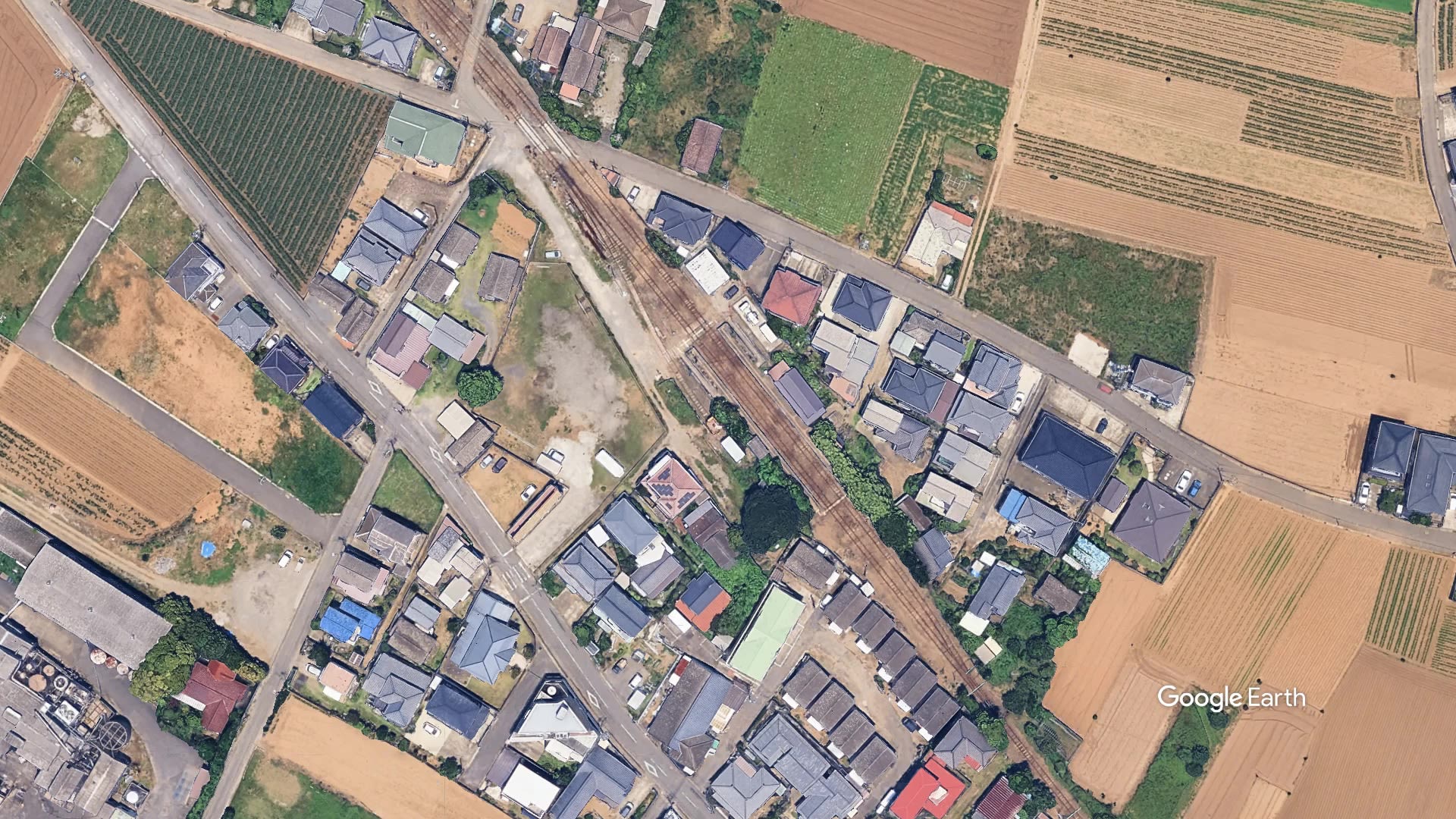

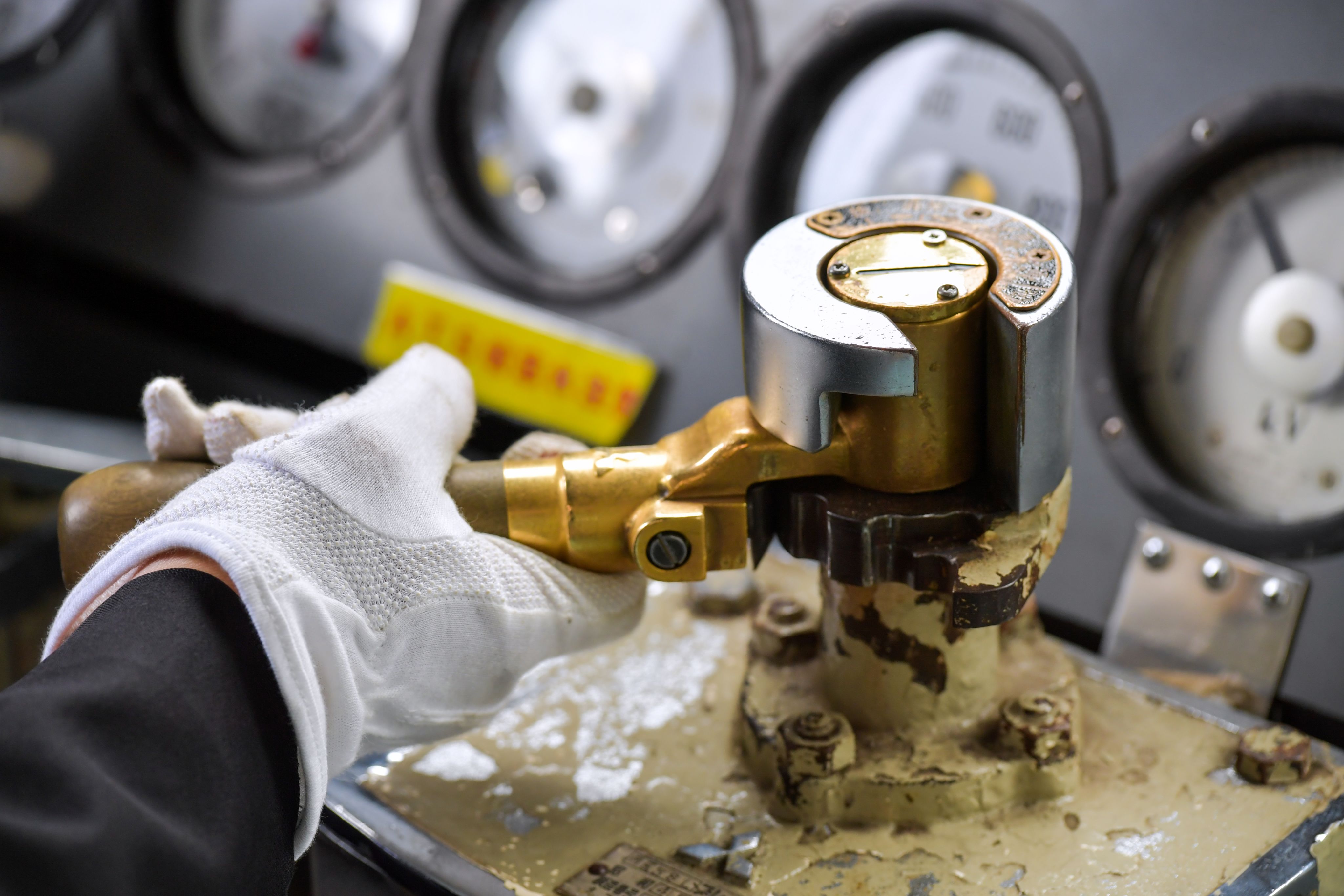
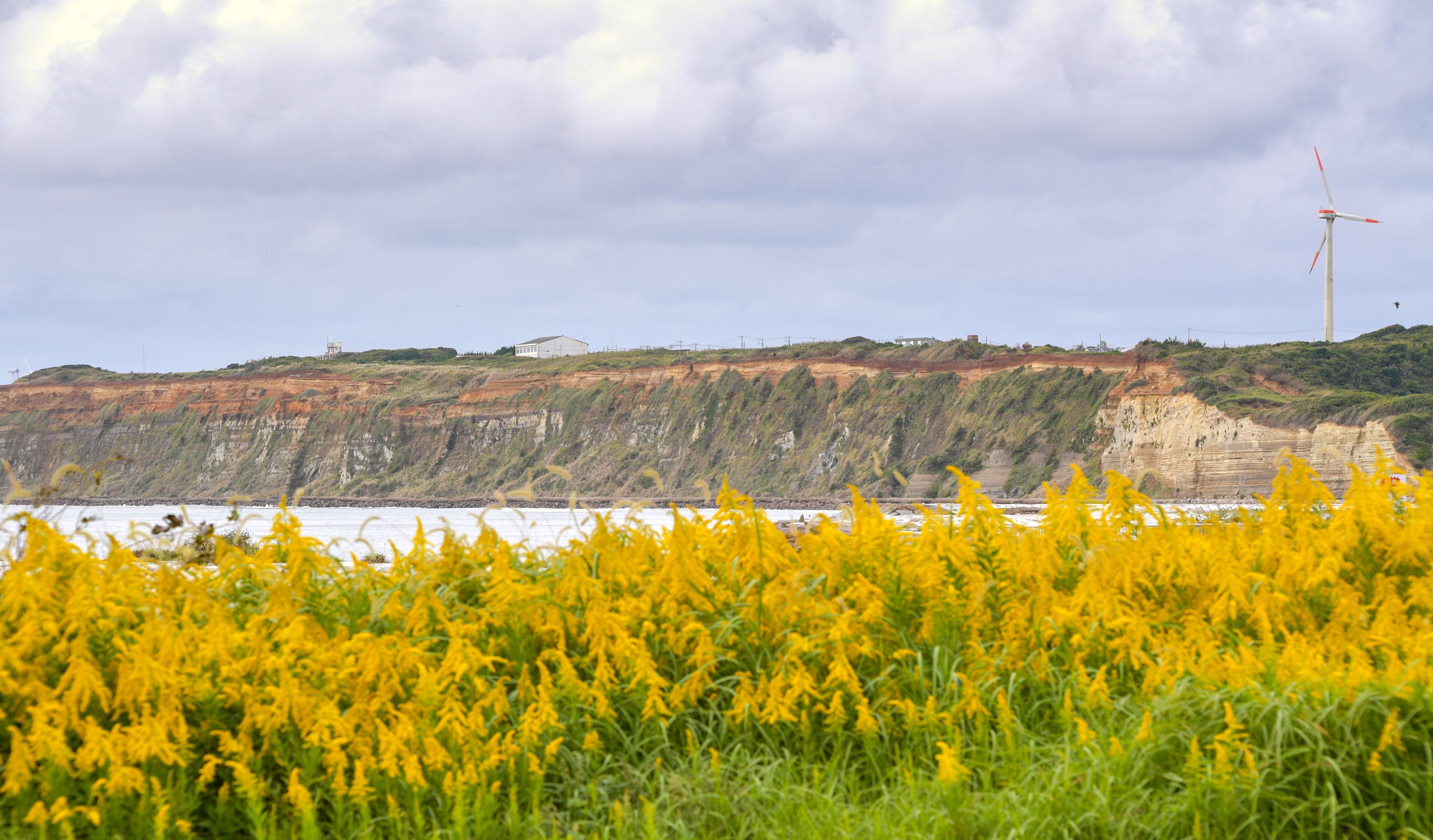
The relationship with Nauru is a recent example of the unconventional steps taken by Choshi Electric Railway to raise its profile and keep trains running along the 6.4-kilometer line, as they have done since services began in 1923.
From the old fishing townscape around Tokawa Station at the southern end of the line, the railway’s four trains amble through rural communities to downtown Choshi at its northern end.
The line comes closest to the coast around Inubo Station for access to the rugged Cape Inubo and lighthouse. It takes around 20 minutes to travel from one end of the line to the other.
From over 2.5 million passengers a year in the 1950s, a decline in the local population and visitors saw passenger numbers drop below one million by the 1990s, according to the operator. An ageing population and the COVID-19 pandemic pushed the railway closer to the brink of financial collapse.
Kazunari Suzuki joined Choshi Electric Railway 26 years ago. The 46-year-old said he cannot recall a time when the situation was stable.
“The railway has become synonymous with deficit,” he said. “Locals, railway enthusiasts, even people who have seen us on television, all know us as the railway that is constantly running at a loss.”
At times the operator leans into its hardships with a sense of humor, as with its “gakeppuchi,” or cliff edge, project, which started in April.
Image posted by Choshi Electric Railway Co. on its official X account to announce the change of the line's nickname to Inubo Gakeppuchi Line. (Courtesy of Choshi Electric Railway Co.)
Image posted by Choshi Electric Railway Co. on its official X account to announce the change of the line's nickname to Inubo Gakeppuchi Line. (Courtesy of Choshi Electric Railway Co.)
A Japanese term used to express being on the brink, gakeppuchi is a reference to the railway’s precarious finances as well as to the cliffs around Choshi’s Byoubugaura and Cape Inubo coastlines.
Under the project, the line has been given the moniker Inubo Gakeppuchi Line, with signs made to match. In July, Choshi Electric Railway hosted a Gakeppuchi Summit, a forum for businesses making the best of their own precarious circumstances.
Katsunori Takemoto, 63, president of the railway, said business opportunities are increasing thanks to the summit. “Everyone is striving to improve performance and working hard to overcome their cliff-edge situations,” he said.
While the self-deprecating humor is not to everyone’s taste, enough people get the joke.
In 2018, Choshi Electric Railway began selling its own snack, “Mazuibo,” or foul-tasting stick. An ironic take on the popular corn snack “Umaibo,” or delicious stick, the operator has since sold over seven million Mazuibo.
For many years, Choshi Electric Railway has been making its own version of nure sembei, the soft rice cracker which is a local specialty.
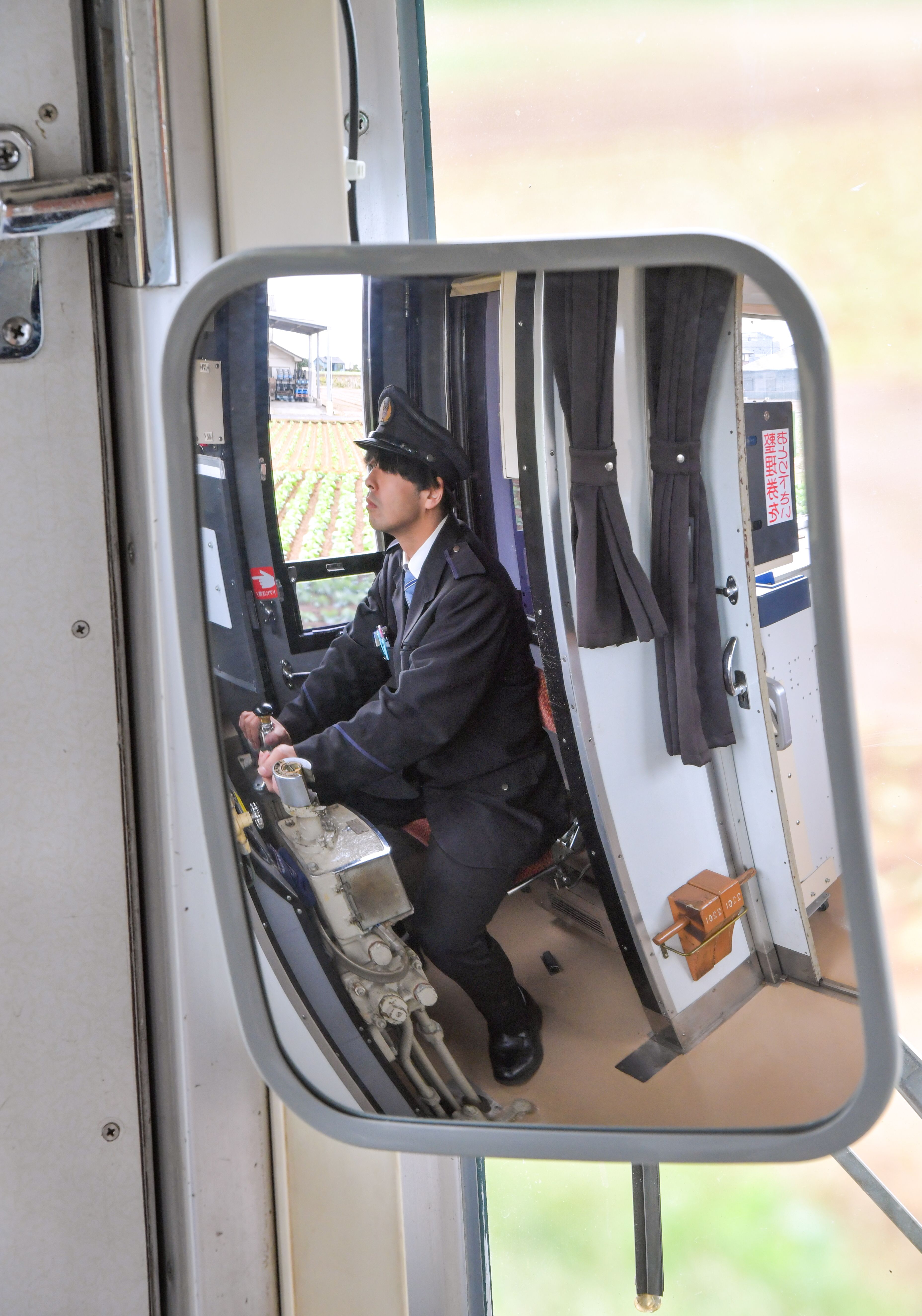
At its factory store, visitors can grill their own nure sembei while next door the factory produces around 15,000 crackers a day, twice that number during busy holiday periods.
With the railway down to a daily average of around 650 passengers, sales from snacks like nure sembei account for around 70 percent of revenue for Choshi Electric Railway. “Without these products, the railway would probably have ceased operating by now,” Suzuki said.
With only around 10 percent of passengers regular commuters, the railway relies on tourists, too.
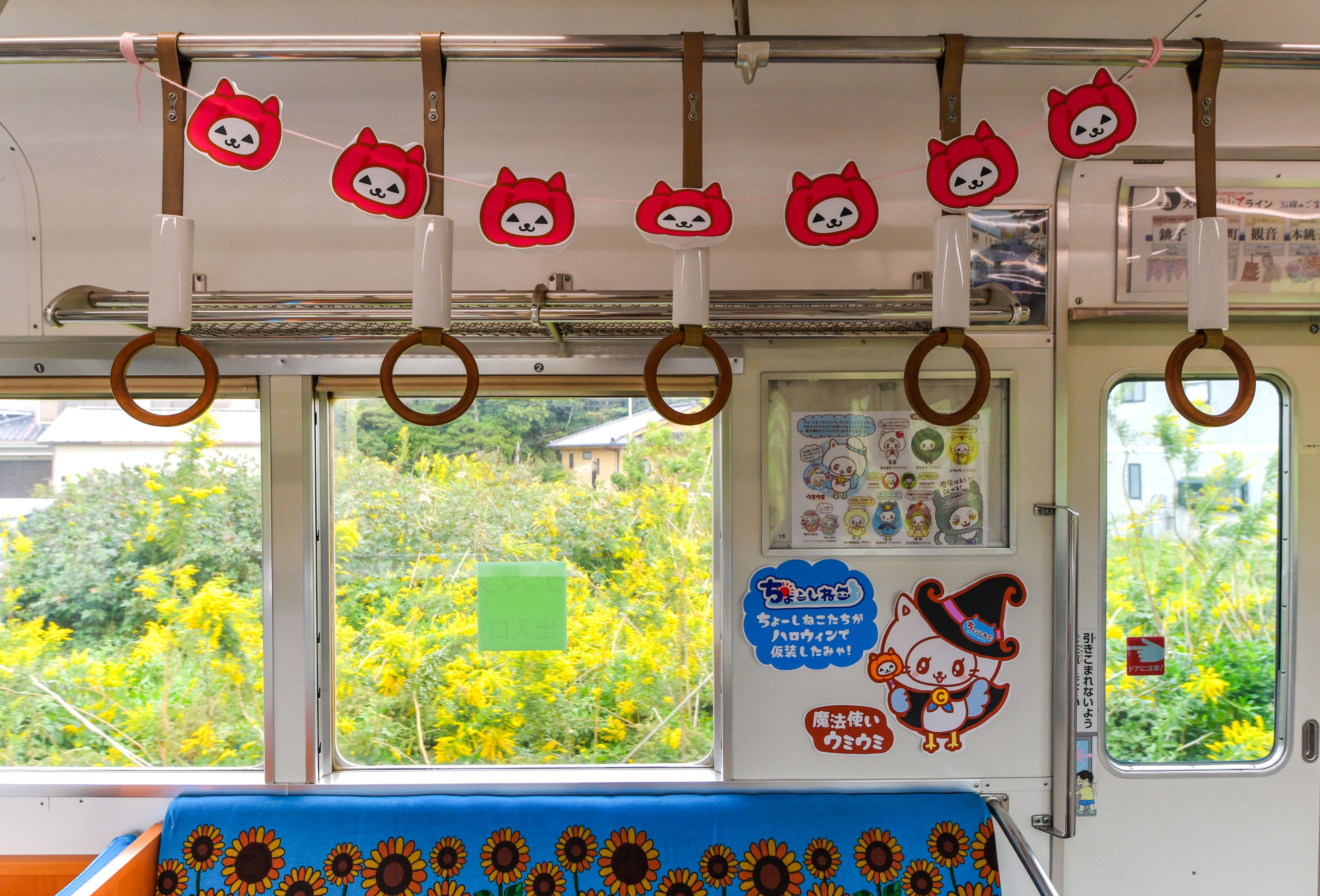
From stations in downtown Choshi visitors can walk to the city’s harbor which regularly handles some of the largest fish landings by volume in Japan.
“Choshi is a fishing town, through and through, so of course we want people to enjoy the seafood while they are here,” Suzuki said.
Yuki Yamamoto was born and raised in Choshi. At his restaurant Maguro Gura, near the harbor, the 49-year-old offers dishes using the pick of the day’s catch, including fresh tuna from the auction market across the street.
With most of his customers tourists, including an increasing number of foreigners, Yamamoto said he appreciates the efforts of the railway to raise Choshi’s profile even if he seldom uses the line himself.
“I think what it is doing is fantastic. Selling items like Mazuibo and even making their own film,” he said.
Poster image for a film produced by Choshi Electric Railway Co. (Courtesy of Choshi Electric Railway Co.)
Poster image for a film produced by Choshi Electric Railway Co. (Courtesy of Choshi Electric Railway Co.)
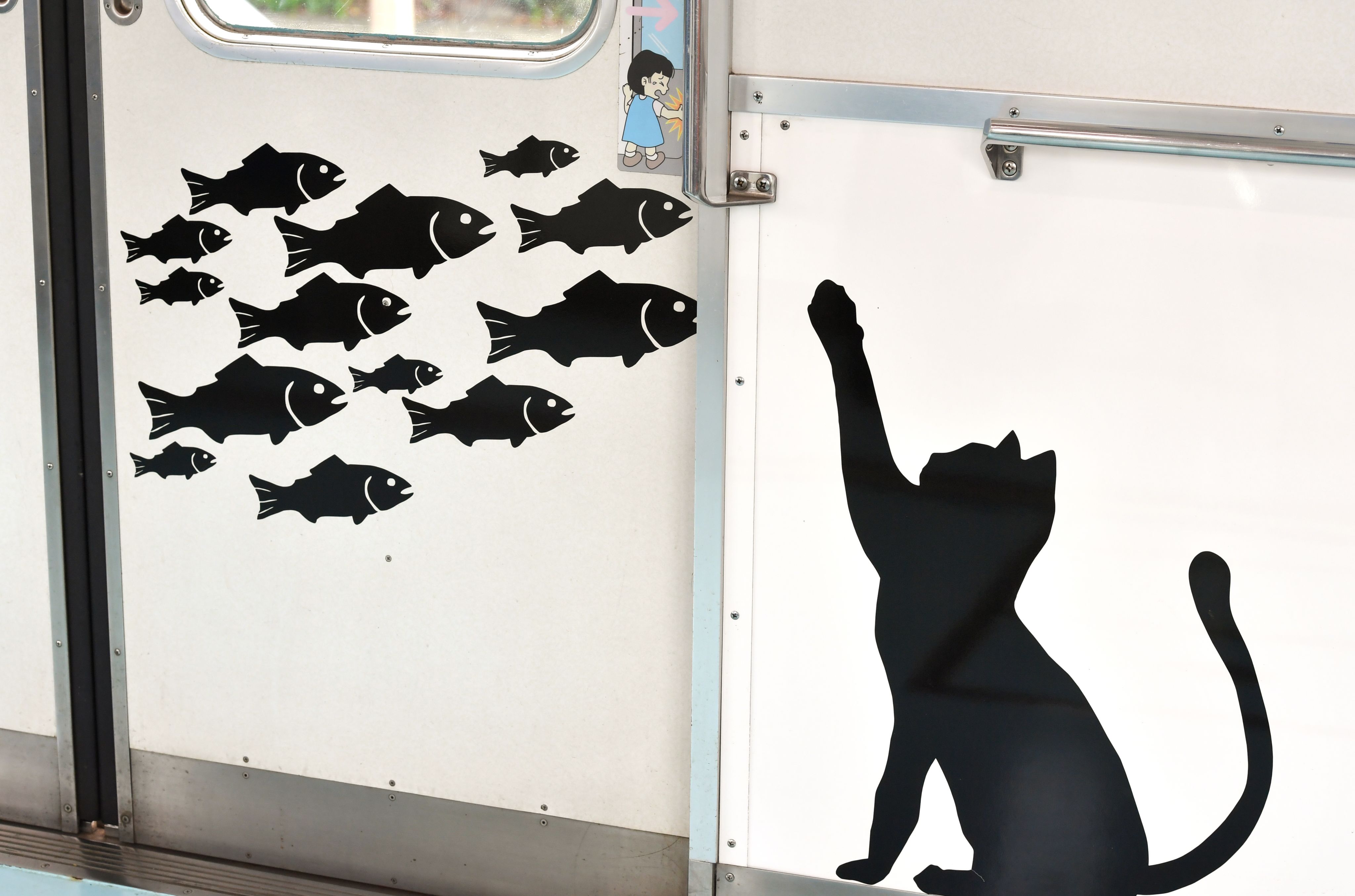
While initiatives like the cliff-edge project have generated sales, a rise in rice prices and other ingredients used for its mainstay nure sembei crackers is keeping the railway on the brink, according to President Takemoto.
“We want to continue running trains for the local community,” he said. “With their support, we hope to move away from the cliff edge.”
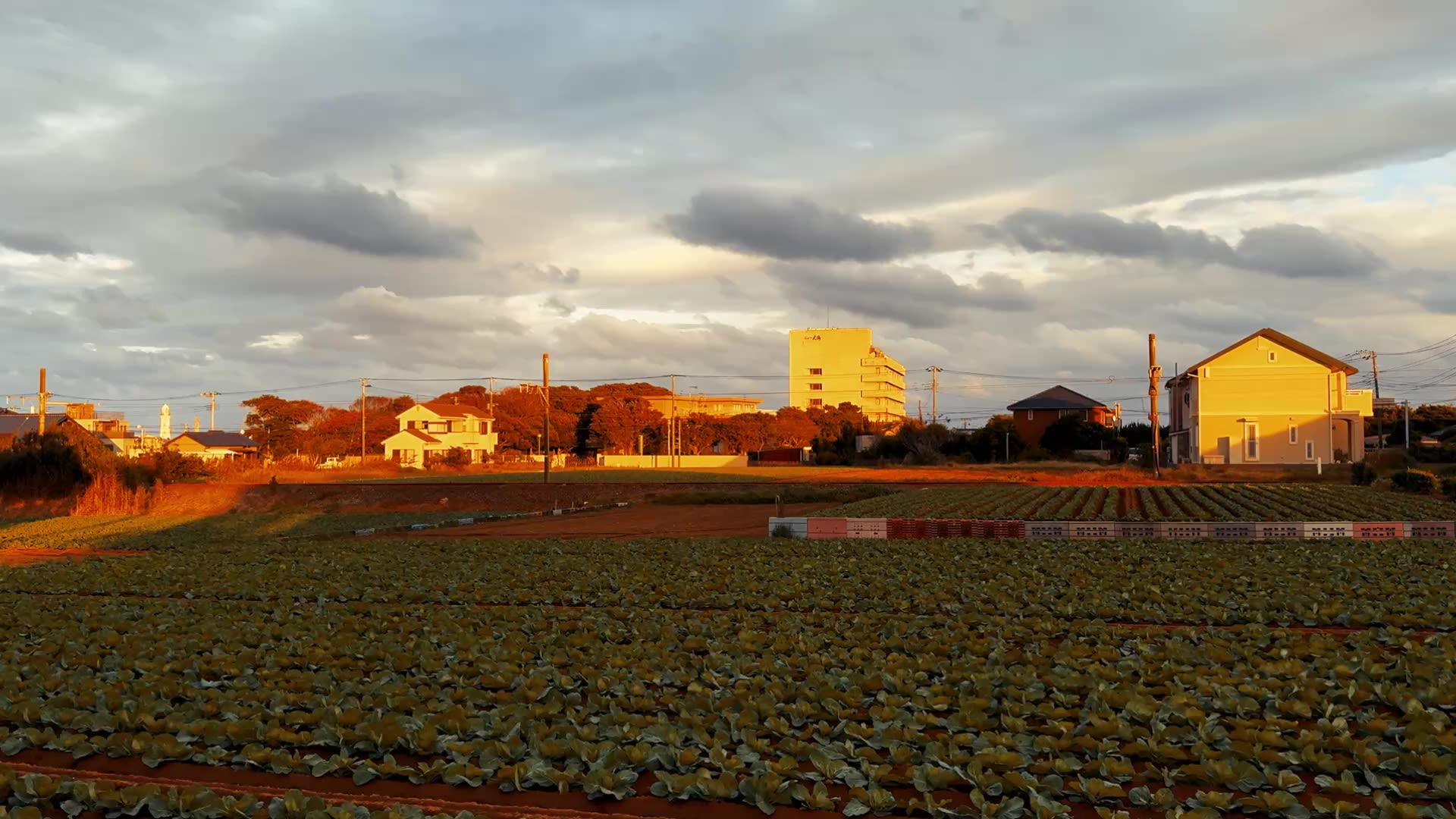
Other Spotlight Japan Stories
Yamanashi winemakers put faith in Japanese grapes to make fine vintage
Faith in Japanese grapes and the local terroir to produce competitive wines is strong among winemakers in central Japan’s Yamanashi Prefecture, where even a local temple makes its own tipple. .
Rising bear attacks prompt new shooting rules, but hunters dwindle
Japan's surge in bear attacks has forced the government to relax rules on "emergency shootings" in populated areas, amid concerns over whether municipalities can secure hunters skilled enough to respond without putting residents at risk.
Narita's holdouts fight for a future beneath the flight path
Resembling shark fins poking above the waterline, the tails of taxiing airplanes are just visible over the tall white fence that separates Kinone Pension from the runways of Narita airport.
Japanese underground idol culture booming in China
At a club in Shanghai, dozens of young people jump and wave glow sticks as they dance to the music. They're Chinese amateur girl groups singing in Japanese, and this is Japan's globalized idol culture.
The Company uses Google Analytics, an access analysis tool provided by Google. Google Analytics uses cookies to track use of the Service. (Client ID / IP address / Viewing page URL / Referrer / Device type / Operating system / Browser type / Language /Screen resolution) Users can prevent Google Analytics, as used by the Company, from tracking their use of the Service by downloading and installing the Google Analytics opt-out add-on provided by Google, and changing the add-on settings on their browser. (https://tools.google.com/dlpage/gaoptout) For more information about how Google handles collected data: Google Analytics Terms of Service (https://policies.google.com/technologies/cookies?hl=en#types-of-cookies) Google Privacy & Terms(https://policies.google.com/privacy)
© Kyodo News. All Rights Reserved. No reproduction or republication without written permission.


